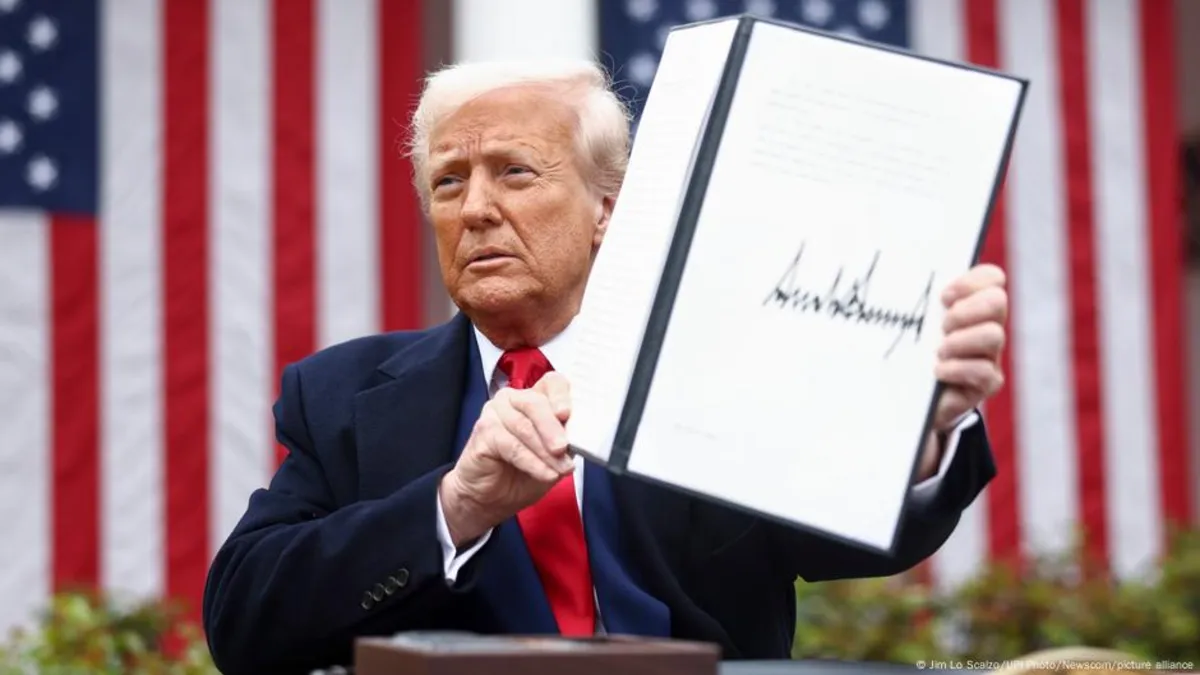
The world closely observed the actions of US President Donald Trump when he issued his first 26 executive orders on January 20, marking his first day in office. Among these orders were significant measures aimed at reversing birthright citizenship, targeting diversity and inclusion initiatives, and specifically addressing the rights of transgender individuals. These actions set a clear tone for the initial 100 days of his second term, showcasing how executive orders allow presidents to wield considerable political power in implementing policies and laws.
Executive orders are essential tools for the president to implement changes within the government. Each order must be grounded in existing laws or constitutional provisions to establish a valid legal basis. A recent analysis by DW examined the ramifications of Trump’s executive orders and the effectiveness of the US legal system in providing checks on his presidential authority.
Since taking office, Trump has consistently utilized executive orders as a means of governance. Data indicates that while he issued the highest number of orders on January 20, he has continued to sign at least one executive order almost every other day since then. In total, Trump has issued over 100 executive orders that have significantly redefined both domestic and foreign policies in the United States.
During his election campaign, Trump and his associates distanced themselves from Project 2025, a manifesto advocating for an ultraconservative reshaping of the United States, published by the Heritage Foundation. This document advocates for minimizing mentions of climate change in government records, accepting fewer refugees, and imposing stricter regulations on abortion. James Goodwin, policy director at the Center for Progressive Reform, highlights how many of Trump's policies align closely with the recommendations outlined in Project 2025, particularly concerning executive orders related to transgender rights.
Trump's reliance on executive orders in the early days of his presidency has surpassed that of his previous term and is unprecedented compared to any president in the 21st century. According to political scientist Andrew Rudalevige, the sheer volume of orders is notable, but so too is the nature of some orders, which appear to stem from personal preferences rather than clear policy objectives. These so-called "vengeance orders" target specific individuals or firms, diverging from traditional executive order practices.
All three branches of the US government possess the authority to challenge or overturn executive orders. Congress can intervene as the legislative body that enacts the laws on which these orders are based. Courts may also step in if an executive order conflicts with the Constitution or existing statutes. Furthermore, future presidents have the power to revoke prior executive orders, as evidenced by Biden's actions to overturn several from Trump's first term. Rudalevige emphasizes that if lasting policy change is the objective, legislative action remains a more durable solution.
Approximately 29% of Trump’s executive orders have been subjected to legal challenges, with many still pending at the time of writing. Draft orders typically undergo a rigorous peer-review process within relevant agencies before being sent to the Justice Department for legality review. However, it appears that the current administration may not be adhering to this long-standing process, raising questions about the legal framework surrounding these orders. Some executive orders seem to intentionally provoke legal disputes, potentially serving as tools for public relations rather than genuine policy implementation.
In an era where Congress struggles to achieve consensus, presidents, including Trump, have increasingly turned to executive orders as a means of enacting policy. While some orders may be aimed at showcasing strong leadership, the critical question remains: Do these orders lead to tangible changes, or are they primarily symbolic? This complex landscape continues to evolve as legal challenges and political dynamics unfold.
For more in-depth analysis and data-driven insights, visit our overview page.